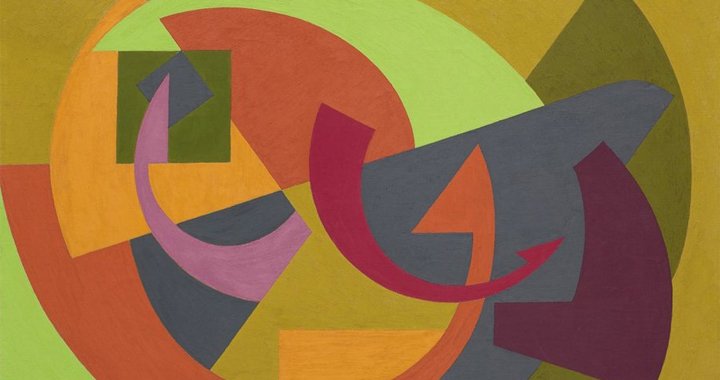
Scandinavian exhibition guide
November / October
14/11/2019
HELSINKI
State of Mind. Helsinki 1939 – 1945
HAM Helsinki Art Museum
18 October till 1 March 2020

HAM Helsinki Art Museum and Helsinki City Museum have co-produced an exhibition called State of Mind – Helsinki 1939‒1945. Between 1939 and 1945, the appearance and spirit of Helsinki changed drastically. The exhibition, which will be spread over Tennispalatsi and Villa Hakasalmi, will showcase pessimism and optimism as reflected by visual art and photographs, in addition to providing a broader look at the visual world that people had to get used to during wartime.
In September 1944, a part of an archive on a secret mood survey was burned in the heart of Kallio. In the preceding years, thousands of ordinary Finns had been recruited to report on moods, rumours and dissidence at workplaces and in shops, cafeterias, public saunas and public transport. This information was conveyed to the military command to provide a picture of civilians’ states of mind, which affected the combat ability of the soldiers on the front lines. That same autumn, the rest of the archive was buried underground in Mäntyharju. The preserved part of the archive was conserved 50 years later in the National Archives of Finland. State of Mind, the first joint exhibition produced by HAM and Helsinki City Museum, is based on this archive, which remains closed today.
The exhibition at HAM will focus in particular on the ability of visual artists to express the city’s sentiments. The fascinating colour scale is a treat for the eyes, with the large projected images bringing the emotions, facial expressions and gestures of Helsinki residents closer to the viewer. The theme of the part of the exhibition showcased at Villa Hakasalmi is the impact of the evacuations of Helsinki on people’s states of mind. The things that were deemed to be the most valuable were taken away from Helsinki and into the countryside or as far away as Sweden: children, women, elderly people, scientific and artistic treasures, public sculptures and cultural heritage landmarks. In addition to well-known artists such as Helene Schjerfbeck, Tove Jansson, Sam Vanni, Essi Renvall, Erik Enroth and Elga Sesemann, the exhibition will feature lesser-known artists and works that have never been exhibited before.
The exhibition was conceived and curated by author Anna Kortelainen, and the exhibition architecture was produced by set designer Minna Santakari.
Ragnar Kjartansson. The Visitors
KIASMA
11 October till 2 February 2020
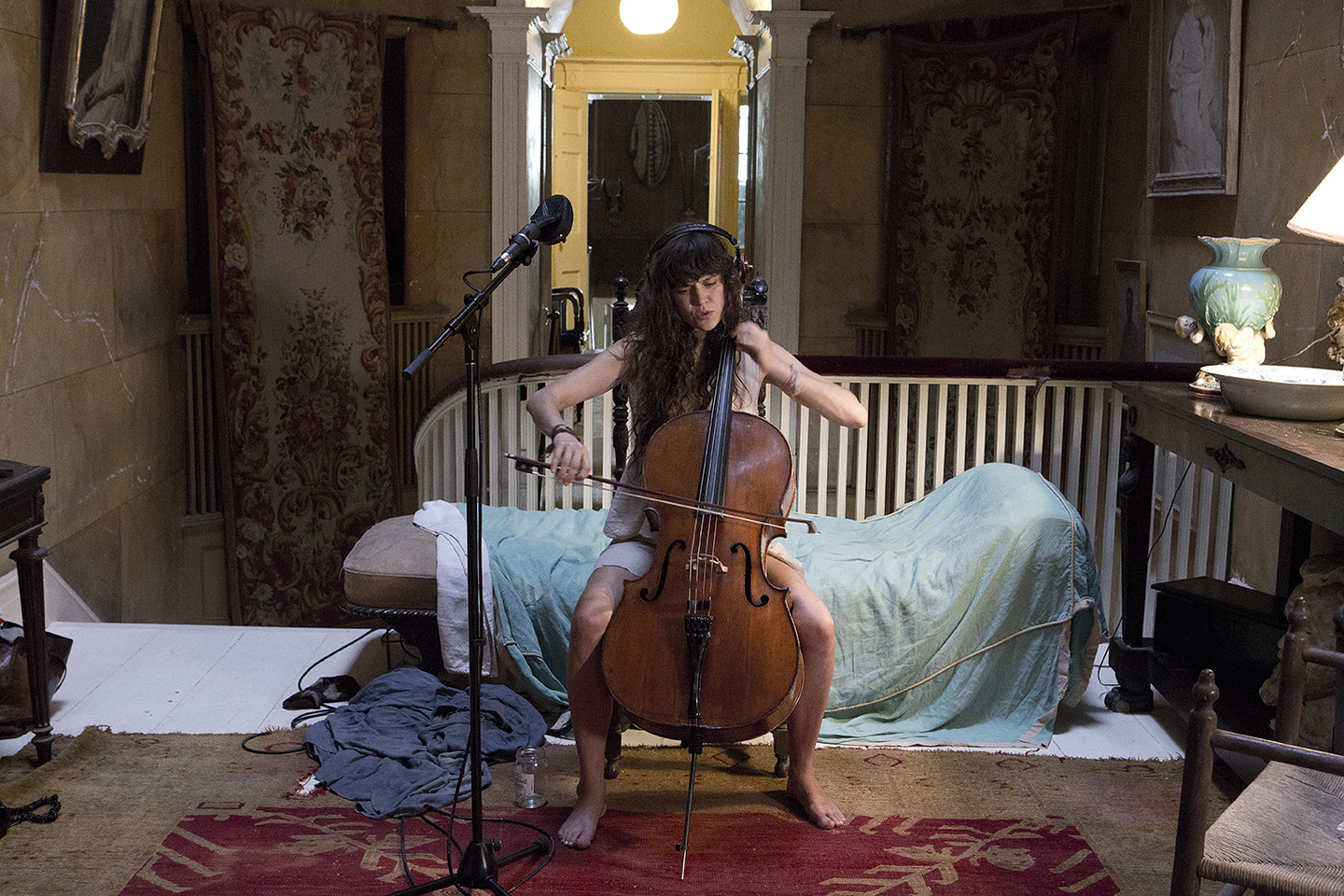
From 11 October until 2 February 2020, the performative installation “The Visitors” by Ragnar Kjartansson will be on view at KIASMA Finnish National gallery.
“The Visitors” was shot at the magnificent old Rokeby estate near New York. The performance of the musician in each individual video was recorded separately, but in the gallery the nine takes merge into a single impressive performance.
The musical experience is a celebration of creativity, community and friendship, and is named after ABBA’s last album. An exploration of separation, the lyrics are based on a poem by Ásdís Sif Gunnarsdóttir. The music is by Ragnar Kjartansson and Davíð Þór Jónsson.
“The Visitors” is part of the Thyssen-Bornemisza Art Contemporary (TBA21) collection in Austria.
Ragnar Kjartansson creates art that revolves around the themes of Nordic identity, melancholia and pop culture. A graduate from the Icelandic Academy of the Arts, he also studied at the Royal Academy in Stockholm. Kjartansson is a member of the Icelandic rock band Trabant. His most recent exhibitions include The Metropolitan Museum of Art (New York), i8 Gallery (Reykjavik), Faurschou Foundation (Beijing), Barbican (London), Art Institute of Chicago, Musée d’art contemporain de Montréal and Palais de Tokyo (Paris). In 2009 he represented Iceland at the Venice Biennale.
Ragnar Kjartansson is the recent winner of Finland’s biggest visual art prize, the Ars Fennica award (2019).
Birger Carstedt. Le Chat Doré
Amos Rex
11 October till 12 January 2020

Amos Rex presents Birger Carlstedt (1907–1975) in an extensive exhibition that encompasses the artist’s entire career, all the way from his abstract experiments of the 1920s to the Concretist period beginning in the 1950s. The exhibition includes a reconstruction of the legendary café Le Chat Doré, “The Golden Cat”.
Carlstedt designed Finland’s first Functionalist interior of a café that opened on Unioninkatu in 1929. For later generations, Le Chat Doré could only be conveyed through gouache blueprints and photographs. In Finnish art history, the floor painting in the café is still considered one of the first constructivist works of art and the interior one of the first Functionalist subjects. The interior was an embodiment of the Bauhaus movement, a combination of end-use and staging elements. It marked the starting point of Carlstedt’s career as a visual artist and, above all, his work later as a theatre set designer during the 1940s and 1950s.
Birger Carlstedt was a pioneer in abstract art and a multi-talented dandy who worked with fields such as interior design, design, and staging as well as painting. He followed and participated in the discussion around art during his time, dared to experiment outside the mainstream, and familiarised himself with new artistic movements during his many travels.
The exhibition is based on Amos Rex’s collections, which the museum has inherited from Birger Carlstedt and his spouse, the concert pianist France Ellegaard.
COPENHAGEN
Leonard Cohen: A crack in everything
Nikolaj Kunsthal
24 October till 13 April 2020
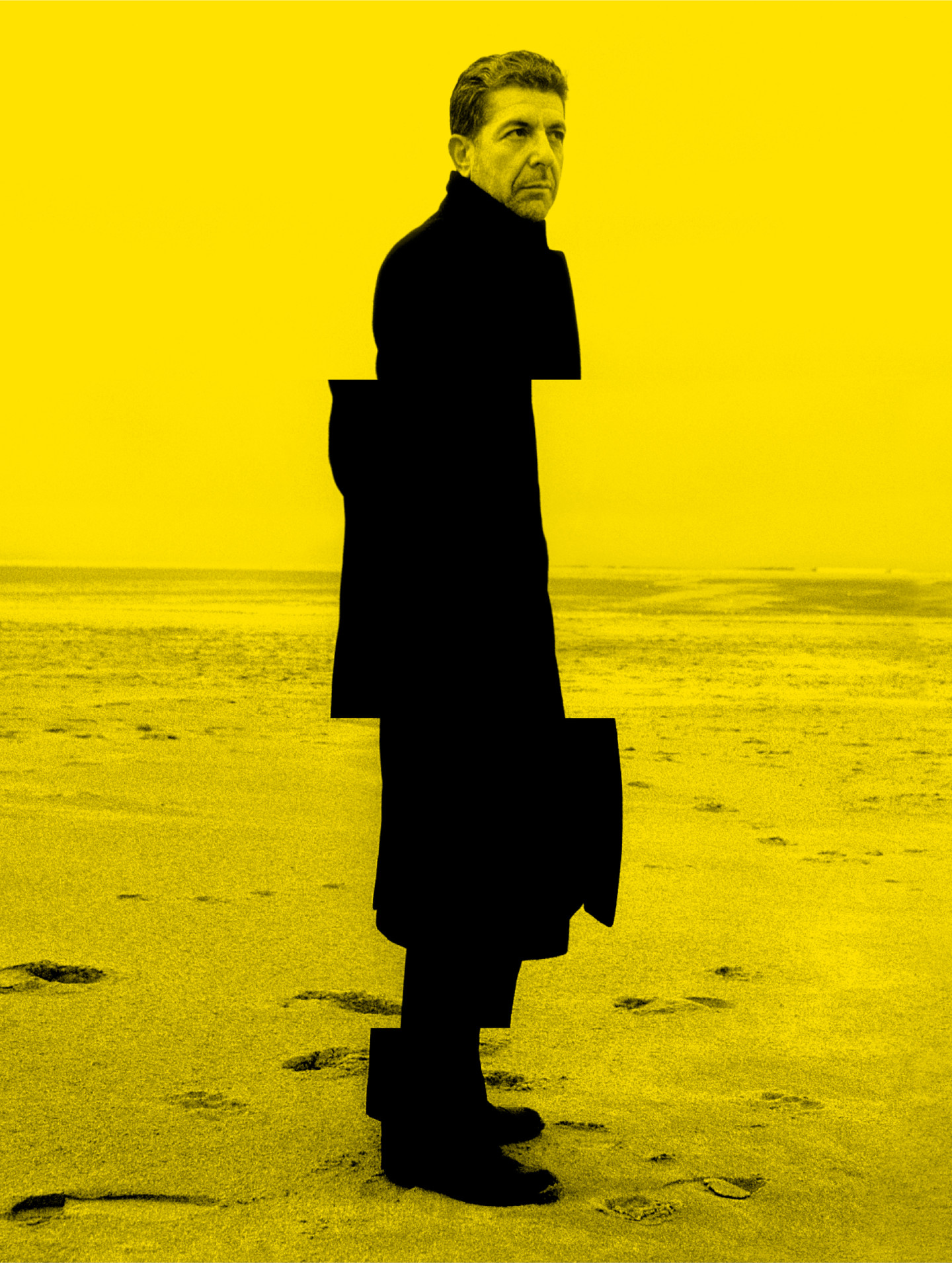
The world-renowned novelist, poet, and singer-songwriter Leonard Cohen has inspired generations of writers, musicians, and artists. He was an extraordinary poet of sorrow and the human condition, giving voice to what it means to be fully alert to the complexities and desires of both body and soul. We are privileged to have Cohen’s music, words, and performances inhabit both the Kunstforeningen GL STRAND and Nikolaj Kunsthal for six months, offering a critical celebration, loving tribute, and quiet commemoration of a vast artistic achievement and an inspiring life.
“Leonard Cohen: A Crack in Everything” is the first exhibition entirely devoted to the imagination and legacy of the influential singer/songwriter, man of letters, and global icon from Montreal, Canada.
Originally conceived by the Musée d’art contemporain de Montréal, the exhibition brings together commissioned artworks by visual artists, filmmakers, and musicians who have been inspired, influenced or otherwise moved by Cohen’s extraordinary oeuvre.
On view at the Nikolaj Kunsthal is a selection of works, among them: an archival video installation highlighting five decades of Cohen’s concert performances; an eighteen-video-screen chorus installation which centers around Cohen’s amazing comeback album, I’m Your Man, featuring ardent fans singing the entire album, accompanied by the choir from the Cohen family’s synagogue; and three stunning film works created by other artists.
The Mosquito-Mouse and Other Hybrids
Kunsthal Charlottenborg
31 October till 16 February 2020
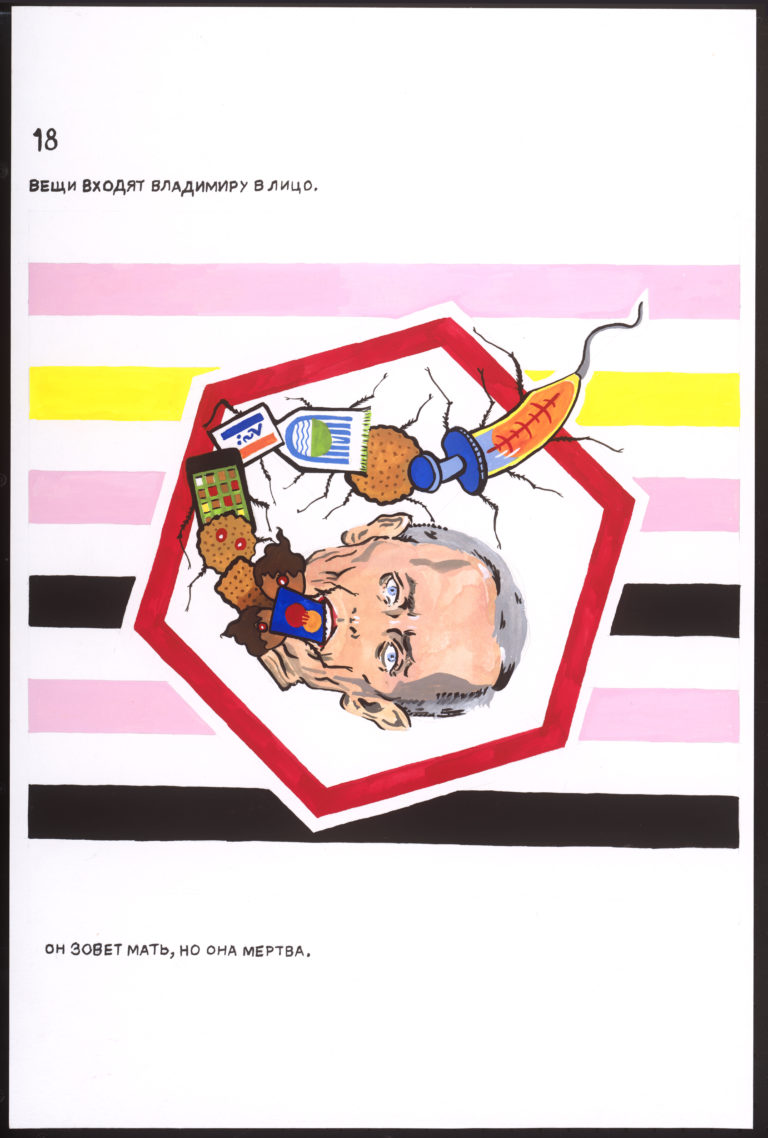
From 31 October till 16 February 2020, Kunsthal Charlottenborg is showing the first-ever solo exhibition in Denmark by writer and filmmaker Roee Rosen.
The exhibition includes the work “Vladimir’s Night” (2011–14) – an album of thirty-nine gouaches and verse that evolves around fetishism and power in satirical fashion while inspired by the underground tradition of the unofficial Moscow artists of the 1960s and 1970s, such as the albums by Kabakov and Pivovarov.
The exhibition also features the film “The Dust Channel” (2016), which attracted a great deal of attention at Documenta 14. This film forms the final chapter in a series based on Komar-Myshkin’s artistic life. The film is an operetta with a Russian libretto about purification in all its forms taking place in a bourgeois Israeli family whose fear of dirt, dust and any foreign matter results in an almost perverted devotion to household appliances. Rosen plays on the connection between dust and sand by incorporating the Israeli desert, where political refugees are detained and the fear of foreigners flourishes. The prison is called Holot, the Hebrew word for sand. An absurd and politically incisive fiction, “The Dust Channel” creates a polemic space for addressing current societal issues.
Roee Rosen is an artist, writer and filmmaker as well as a critical voice in his native Israel. His practice focuses on power, forms of desire, and structural violence. Rosen has created an artistic universe that undermines normative hegemonies, using fiction and satire as he merges Israeli and global politics with myths and historical references. Using a variety of fictional characters and iconographic motifs, Rosen draws on – and transforms – historical avant-garde and popular media, political propaganda, and classic fairy tales for children. Roee Rosen is a professor at both HaMidrasha College of Art, Kfar-Saba and the Bezalel Art Academy of Arts and Design, Jerusalem.
The exhibition is curated by Anne Mikél Jensen.
Larissa Sansour. Heirloom
Copenhagen Contemporary
13 December till 13 April 2020

This year ninety countries are participating in the world’s oldest and perhaps most prestigious art event – the Venice Biennale – and the Danish-Palestinian artist Larissa Sansour has been selected to represent Denmark. In December 2019, there will be an opportunity to experience the exhibition “Heirloom” at Copenhagen Contemporary. History, recollection, and identity form the basis of Sansour’s exhibition, which will be shown at the Danish pavilion in Venice during the Biennale.
The exhibition “Heirloom” invites the audience to enter a dark universe comprising a science fiction film, a sculptural installation, and an architectural intervention. The science fiction film “In Vitro” takes place in Bethlehem in a not-too-distant future in which a climate disaster has forced human beings to live in concrete bunkers below ground. The film’s action is constructed around a dialogue between two women: one aged and dying, the other a young woman.
The two women disagree about what is needed to secure survival. The younger woman questions whether the traditions and the recollections passed on to her are of any use at all when the world has been destroyed and a new one needs to be built.
The exhibition also presents the sculptural installation “Monument for Lost Time”, a large black sphere which doubles as a kind of memory bank in the film. Finally, the floor of the exhibition space is partly covered by Palestinian tiles that also appear in the film.
STOCKHOLM
Hella Jongerius “Breathing Colour”
Nationalmuseum
17 October till 9 February 2020

Nationalmuseum presents Hella Jongerius’s exhibition “Breathing Colour”, a visual installation that features the results of her longstanding research into colour, shape, light and materials.
Art and design are configurations of colour, light, form, shadows, reflections and materiality. The “Hella Jongerius – Breathing Colour” exhibition is ensconced in the borderline between art and design. It presents a visual examination of how colour and light interplay and change during all hours of the day. In forms of paper, textiles, ceramics, metal and plastics, internationally renowned star designer, Hella Jongerius displays her many years of artistic research into colour, light and materiality. As a designer, she often questions the perfunctory views of design manufacturers and the use of colour in the development of products. Jongerius argues that this leads to our missing out on aspects and experiences of the world around us. Her study is deepened in the meeting of the works of art she has chosen from Nationalmuseum’s collections.
After the renovation of Nationalmuseum, the museum exhibits art against coloured walls, integrated so that painting and sculpture meet textiles and ceramics from the same period. The colour schemes in the different rooms is the result of long-standing studies conducted by the museum into how colour, art and design interplay with the goal of giving the objects a context that increases their degree of visual attraction. The presenting of “Hella Jongerius – Breathing Colour” to the public at large will hopefully lead to increased reflection and discussion about how colour influences us and our experience of the world.
Aris Fioretos
Moderna Museet
25 October till 2 February 2020

A laboratory of a book, “Atlas” brings to life a parallel world that is deceptively similar to our own. Hovering between fiction and cultural history, we meet a universe of text in an eponymous exhibition. Aris Fioretos is the author of the book behind the exhibition in the Pontus Hultén Study Gallery.
It all started with an obituary. One day, Aris Fioretos discovered that an archivist at the National Board of Health had died at a very old age, leaving no kin. He wouldn’t have given Iris Frost another thought if her name had not been similar to that of a minor character in his first novel. Out of curiosity, he contacted the newspaper and obtained the number to the person who had submitted the obituary. When they met, life proved stranger than fiction. Not only had the deceased read his novels about how the brain, genitals and heart informed the view of mankind that emerged in the early 20th century, but had also commented on them.
Aris Fioretos’ new book, “Atlas”, fuses essay and fiction. His three previous novels, “Irma”, “The Truth about Sascha Knisch”, and “Nelly B:s Hjärta” (Nelly B’s Heart), are based on historical facts up to 1933. The three protagonists are connected but also independent – like bodily organs. Stockholm is important as the setting of the story, which is mainly about medicine and major social change. The exhibition is like a cabinet, where some 20 affective states are presented in an architectural model with cut-out figures. The model/table is in three parts, each coordinated with the three female protagonists.
The exhibition is curated by Annika Gunnarsson.
Teresa Solar: RIDE RIDE RIDE
Index Gallery Stockholm
26 October till 26 January 2020
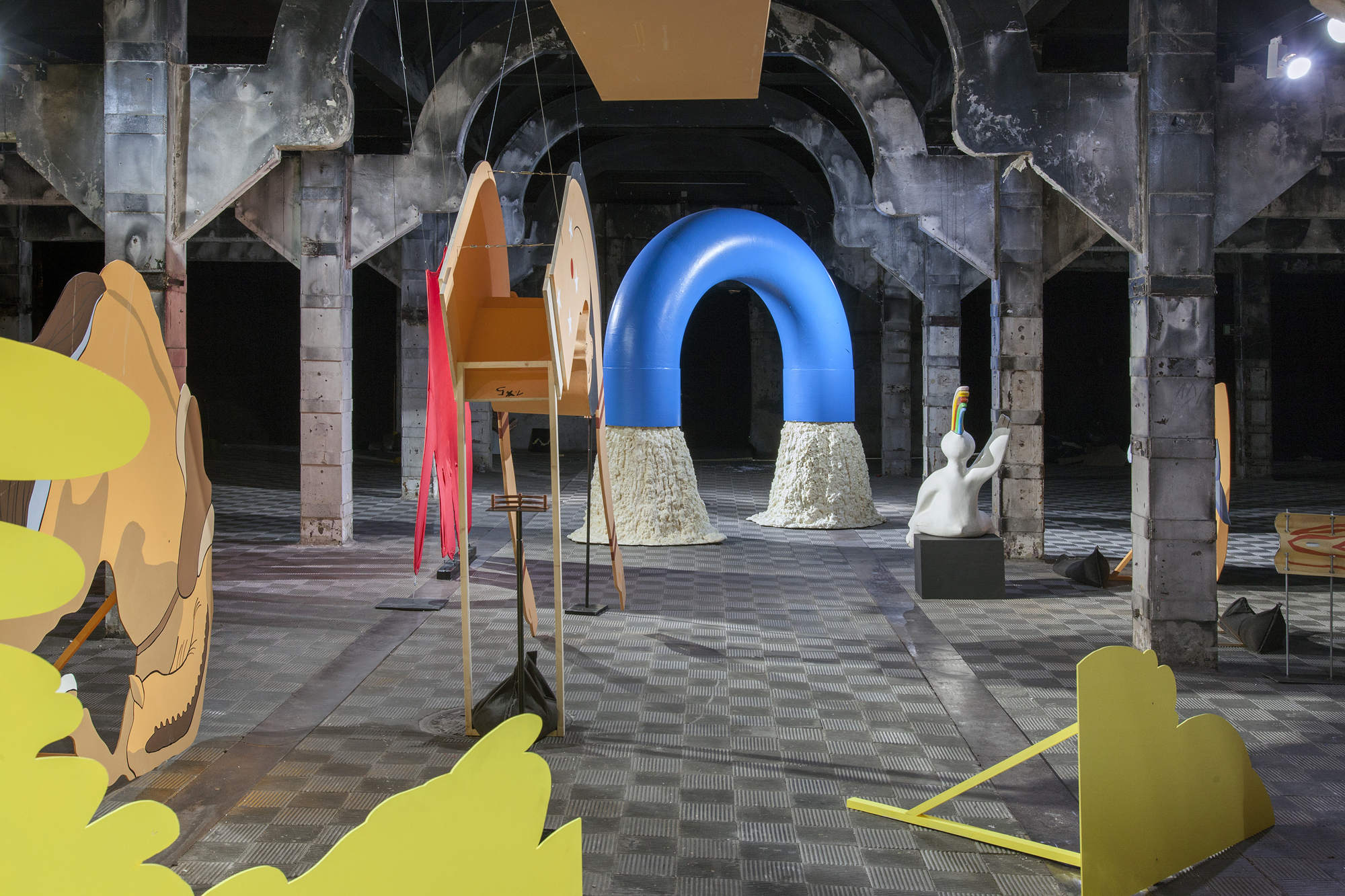
Teresa Solar works with objects and the space in between them, with narratives and broken information. Solar experiments with textures and physicality understanding art as a situation to discover, feel and think. Her exhibited objects can be sculpture and also set material, can be produced or found, but are also at a conjunction in which the whole group becomes a para-linguistic structure with internal dialogues in several timelines. In her exhibition, Solar mixes classic Egyptian mythology, details of contemporary history, and linguistic theory: a sculpture of Nut – the goddess of the night in pharaonic Egypt – becomes the axis of the space at Index Foundation and a partner in a dialogue with plenty of references. Curro, the mascot of the universal exhibition in Sevilla 1992, with its bright colours and cartoonish design, is divided into fragments of memory and disappearance. A killer whale becoming a children’s game and a stretched tiger show the porosity and elasticity of objects – a nod to the capacity of art to define other ways of relating to them and modifying its signification. A canoe with a new layer of paint is now an eye, a body, an openness. And still a canoe. Gestures become objects and games, objects become unwritten words and sensual connections, and lapses of time offer up the next experience to be discovered. The experience of the visit, the idea of the game, and the construction of the cultural experience are related to the act of exhibiting but also to other formats of interaction. The planning of emotions at the amusement park – with the common acceptance of the fictionalisation of a fragment of reality – offers us another type of contact with objects: objects at the amusement park are there to be part of the hallucinatory construction and controlled fear as a mechanism for feelings. And as a mechanism with a transparent goal, the machinery doesn’t need to be hidden.